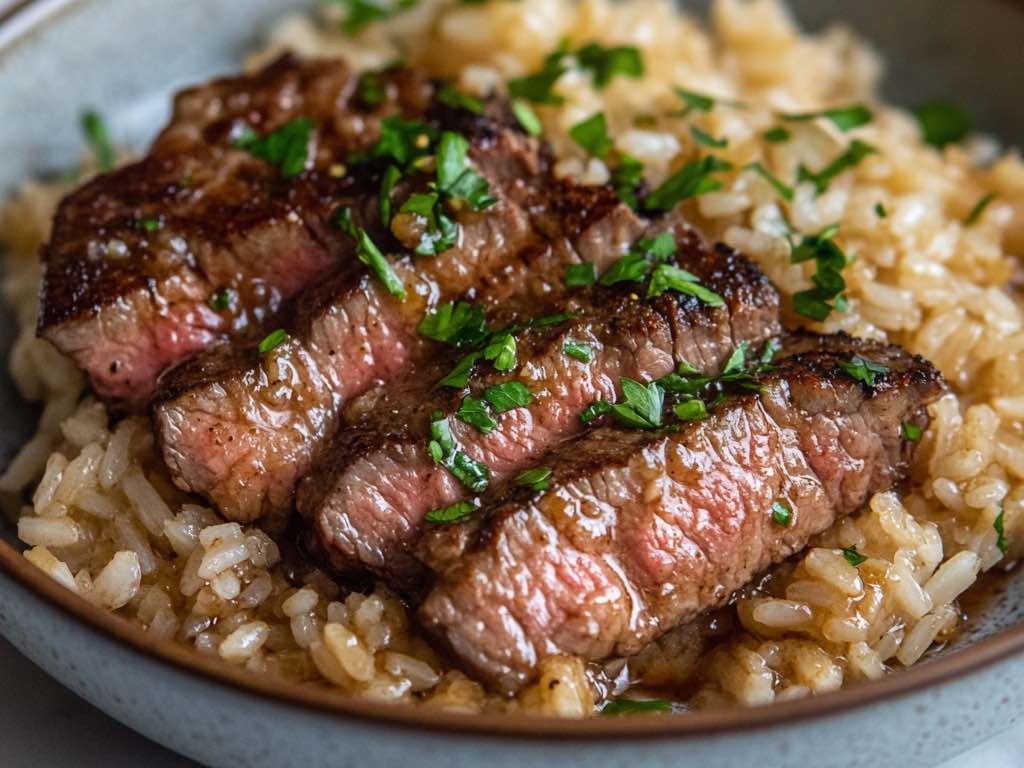
Mastering the Art of Steak and Rice: A Timeless Culinary Duo
|
|
Time to read 7 min
Welcome to One Stop Halal!
Written by: Samir P.
|
|
Time to read 7 min
Steak and rice is a classic combination that balances rich, savory protein with a versatile, comforting starch. The pairing transcends cultures and cuisines, appearing in everything from high-end steakhouses to street food stalls worldwide. This blog will explore the history of steak and rice, different culinary interpretations of the dish, various cooking techniques for steak and rice, and tips on creating your own steak and rice masterpiece at home.
Steak and rice are popular food pairings that can be traced back to different parts of the world. In Latin America, for example, rice is a staple side dish served alongside many grilled meats, including steak. Dishes like Arroz con Carne Asada or Bistec a lo Pobre in South America combine juicy, flavorful cuts of steak with seasoned rice to create a hearty and satisfying meal.
In Asia, steak is often paired with rice in dishes such as beef bulgogi from Korea, gyudon in Japan, or beef rendang in Indonesia. Each of these dishes utilizes different cuts of beef and a range of marinades, sauces, and spices, giving a unique regional spin on the simple yet effective combination of steak and rice. Similarly, in many Western cuisines, particularly in the United States, steak is often paired with rice pilafs, wild rice, or simply steamed rice for a more health-conscious option.
The appeal of steak and rice bowl lies in its simplicity. Both ingredients serve as a blank canvas for flavor experimentation, and the variety of cooking techniques available can take this pairing from casual weeknight dinners to gourmet dining.
Grilling is one of the most popular ways to cook steak, providing a smoky, charred flavor. It's important to preheat the grill and ensure the steak has reached room temperature for even cooking. Ribeye, sirloin, and flank steaks are well-suited to grilling, with each cut offering a slightly different eating experience. For grilling aficionados, experimenting with wood chips can add an extra layer of flavor to the meat, which then seeps into the rice.
Rice is an incredibly versatile grain that beautifully complements steak. It absorbs juices, sauces, and seasoning, and different types of rice bring different flavors and textures to the dish, making it an essential component of the steak rice pairing.
Steak and rice are neutral in flavor, allowing countless flavor pairings. Here are a few ways to elevate your rice and steak combination:
Welcome to the Home of the Halal Beef. We carry various beef cuts that are hard to find elsewhere. We deliver to your doorstep anywhere in the United States within 1-2 business days.
Beef Steak and Rice may seem like a straightforward pairing, but their versatility and ability to complement various flavors and cuisines make them a beloved dish across the globe. Whether you're making a simple grilled steak with steamed rice or preparing an elaborate marinated steak with risotto, the possibilities are endless. With the right cuts, seasonings, and cooking techniques, steak and rice can quickly become the centerpiece of a memorable meal.

© 2025 One Stop Halal, Inc.